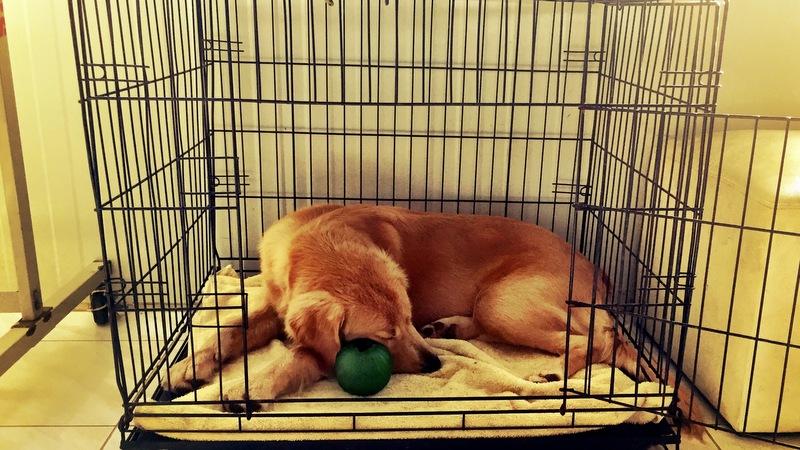Well, more specifically, dogs like dens, closed spaces and the feeling of security and closeness. Sure, they like to roll in the grass, run on the beach or lay down out in the driveway from time to time – but watch them closely, dogs will very often lie under chairs, tables, or backed up against the sofa or a corner. Whelping mothers will burrow a den to have her pups, it’s instinctual – the den is a safe sanctuary.
The problem with using crates however, is two-fold. First, we’re human and generally prefer large open spaces, rather than cozy dens, so we automatically think “that’s what the dog wants”, and second, most people don’t know how to properly introduce a dog to a crate. It becomes a punishment tool, or somewhere to put the dog to “stop it being naughty” – and then it’s a nightmare existence, for both dog and owner, but particularly for the dog.
However, if you show your dog that the crate is their den, their sanctuary, their safe space – they’ll absolutely love going into it. I have a number of crates at home and during the day, they are all open, and you will always find a dog in some of them. They choose to take themselves in there to relax.
Of course the critical thing here is time, and how much of it is spent in the crate. If your dog is crated eight hours overnight and then another eight to 10 hours during the day whilst you’re at work – that’s way too much, and no fun at all. Dogs, as we know, are social animals and require interaction and engagement with other dogs, people and the world around them. They also need both physical and mental stimulation let alone the need to relieve themselves in the right place.
That said, dogs and particularly puppies, sleep a lot. Pups can easily snooze 16-plus hours a day. And while it doesn’t all have to be in their crate, it can certainly be a good safe place for them to get some proper downtime.
Crates are also an excellent tool to help with both management and training programmes. House-training, especially for new puppies, can be tricky for some. But using a crate correctly can give you rapid progress in house training your pup, and help to show them “this is where I sleep, and this is where I poop!” Additionally, the use of a crate can be a really effective tool in helping dogs acquire some confidence, and also help relieve, or actually prevent, separation anxiety… which itself is a big topic and will have its own column shortly!
As well as being a quiet, safe place for your dog to hang out, it’s also a good place for your dog to learn about chewing toys, and not your shoes. As part of a solid management programme, if you get your dog excited about chewing his chew toys, he’s not going to learn about the excitement of chewing your shoes.
Again it’s worth stressing the point, that the use of a crate (or indeed any management, or training tool) needs to be done in the proper manner. Your dog needs to be properly introduced to the crate, not just thrown in there and left to his own devices. Remember, it’s about showing them it’s safe, it’s comfy, it’s their den.
And once you have a dog that is solidly crate trained, you’ll find that he’ll choose to spend time in there on his own from time to time – maybe sleep in there at night, even with the door open.
If you would like some more information on canine training, or behavioural issues, then please contact us on 091 654 1960, email info@k9pointacademy.com, or check our website www.k9pointacademy.com. CPA is accredited with the Certification Council for Professional Dog Trainers (CCPDT), and as an American Kennel Club (AKC) Evaluator.








